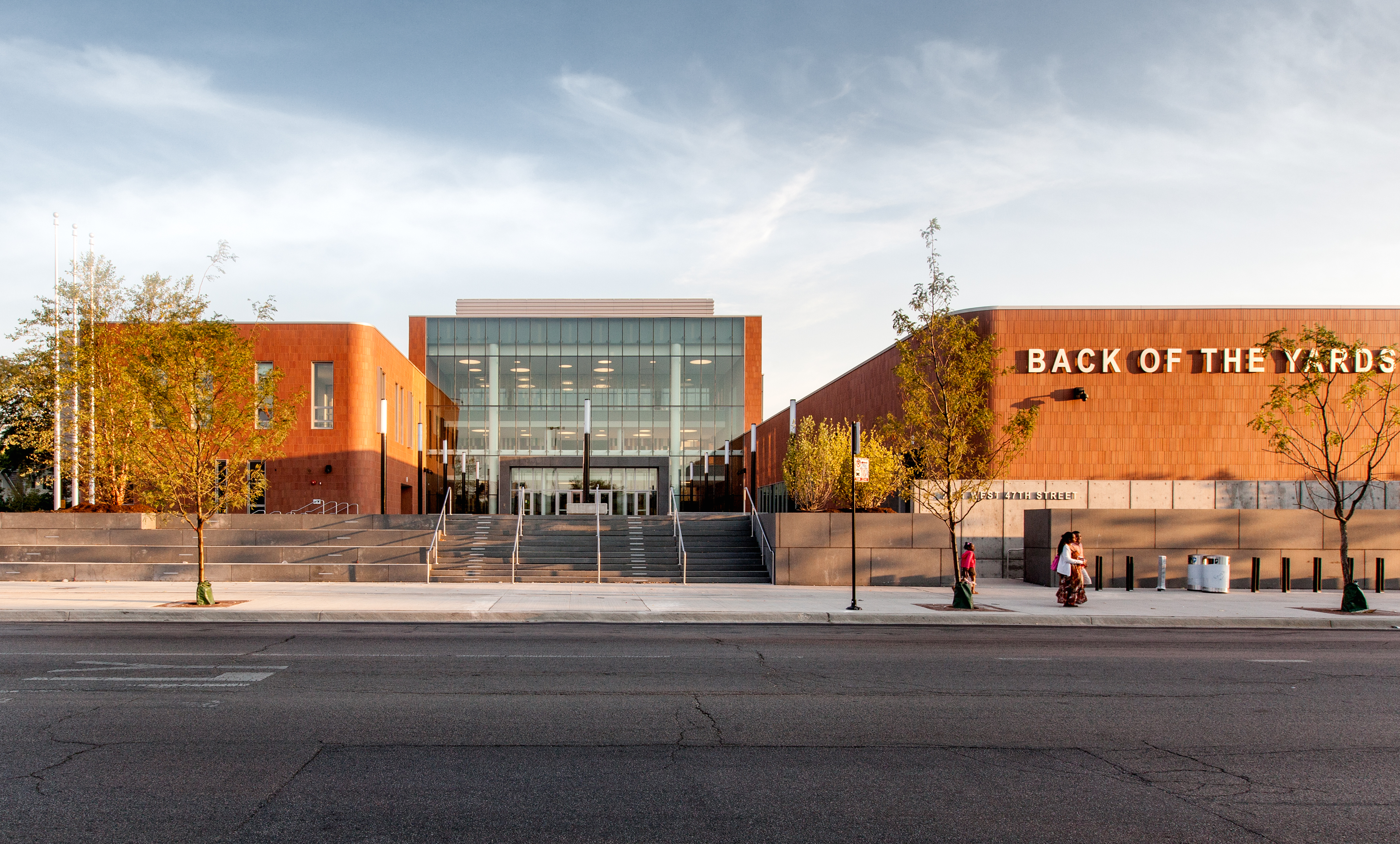Doggerel Ι July 1, 2016
Uber, Airbnb, WeWork: every day, entrepreneurs find new ways to diffuse the ownership of expensive infrastructure in order to drive down prices.
But while today’s sharing economy tends to focus on individual consumers, the concept could find creative new applications in the public sector. For example, urban schools contain many different programs and functions (libraries, green outdoor space, event spaces) that are often duplicated down the block by another municipal agency. Why not just share the infrastructure?
Luis Collado, a principal at Chicago’s STL Architects, calls this approach “breaking the school”: atomizing the facility’s secondary functions and sharing them with the surrounding neighborhood in ways that benefit students and their neighbors alike.
The firm has spent the past few years exploring this idea.
Studying Chicago schools
STL turned to this approach in 2012, when the Chicago Housing Authority (CHA) commissioned the firm to study the relationship between education and community as part of its gargantuan effort to dismantle the city’s high-rise public housing towers in favor of developer-led mixed-income districts.
The “learning communities” plan, as the report was known, turned into a blueprint for public-interest design at a neighborhood scale, focusing on a common problem: the feedback loop between disadvantaged communities and struggling schools.
The architects studied elementary schools across the city, diagramming their proximity to facilities in categories they dubbed “body” (parks, grocery stores, hospitals), “mind” (schools, libraries), and “soul” (museums, churches, theaters). They found that the best schools were close to nearly three times as many of these facilities as the worst schools.
STL’s main takeaway: schools perform better when they’re surrounded by a diverse array of non-residential programs — a wide sampling of body, mind, and soul.
Of course, proximity to social infrastructure is only one factor in student achievement. But unlike many others, it’s one that architects can directly influence.
A campus for all
Although grounded in deep research into the specifics of Chicago urbanism, the resulting design proposal boils down to a simple, universal idea: as Collado put it, “Quality education is equally desired by people of all income levels.”
Good schools could help overcome socioeconomic divides, attracting rich and poor families alike to a neighborhood. As the middle class moves back to American cities, this could help alleviate segregation.
Further, these buildings can add value beyond the typical school program. According to the report, “This new development model will incorporate social and educational programming to empower a community to provide the resources and support that individual families cannot attain by themselves.”
The report identifies two design approaches for achieving this: a traditional campus plan with each learning community consolidated in a few blocks (most appropriate for new construction) and a scattered site plan that’s more dispersed (better for infill and adaptive reuse).
In both scenarios, STL’s planning studies suggest heterogeneous buildings linked by green space. The learning communities contain not just schools, but mixed-income residential units and a healthy serving of body/mind/soul infrastructure. The report posits the school as an urban neighborhood woven into the fabric of the city, not an isolated compound for monastic study — “no longer a building, but a collection of buildings working as one.”
The school-sharing economy
The plan’s most notable innovation lies in asking ancillary school programs to share costs with municipal agencies or private companies. There are a smattering of projects that share public infrastructure in similar ways, but STL’s district-scale planning in dense urban contexts makes it unique. Their plan asks, why have an elementary school library down the street from a public library? Why not combine them? “It is important to be judicious about construction spending; every square foot of architecture built needs to be used,” says STL principal Jose Luis de la Fuente. “When? If possible, seven days a week, 24 hours a day. Schools, by nature, are not used seven days a week, 24 hours a day. And yet, there is demand to use certain programmatic pieces of a school after hours.”
Municipal governments could reduce labor costs as well as capital expenditure by asking their schools to do more. The Chicago Park District could collaborate on maintaining school grounds that double as a public park; a private health clinic might station a nurse at a school to take temperatures and hand out medication; a physical education teacher could help train community members.
Another potential benefit: strong connections to the wider community could help keep students out of trouble after school.
From theory to practice
Due to a change in executive leadership at CHA, the learning communities plan was never adopted. But STL has since channeled the thinking behind it into a public high school on Chicago’s South Side.
The Back of the Yards school serves a largely low-income, Hispanic student body, offering a rigorous International Baccalaureate academic program. Completed in 2013, it contains a branch of the Chicago Public Library. Behind a burly wall of striated brick, a reading garden with concrete benches shaded by young trees leads into the library’s public entrance — a bit of community green space STL’s plan gives to the community as well. Inside, the perimeter of the library is ringed with multipurpose meeting spaces, ensuring that it can function as both a place for civic conversation and community, and as a repository of knowledge for the Back of the Yards neighborhood.
It’s a small step toward inviting the public in and breaking up urban monocultures within buildings and the people who use them. Solving schools, it seems to suggest, could help some of the city’s other challenges fall into place.
